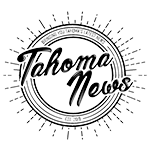Esports, what are they and can they succeed in Tahoma?
A dive into the vast world of competitive video gaming and their chances in Tahomas ecosystem.
November 5, 2018
Esports are very similar to what many would call a traditional sports league, but based upon the entire premise of video games like Counter-Strike, League of Legends, Rainbow Six: Siege, and Dota. This is one of this decade’s most successful phenomenon, with leagues propping up taking on traditional sports franchising routes taking the forefront of esports.
With esports revenue to top $1 Billion in the near future and viewership already beating out the numbers of the NBA and NHL Finals, there is a lot of interest in esports, but can they succeed at a high school level?
It might be that they already have and Tahoma is late to the game. With prizes being as high as Scholarships for the colleges they want to go to or cold hard cash. A new development is that Arizona high school students will now be able to compete for a state championship in video games starting this winter. A key difference is how year-round esports are compared to a traditional sports league like Football or Basketball, they just simply aren’t, tournaments and leagues can run all year with intermittent breaks in between seasons/splits.
So it may be clear Tahoma is showing a bit of a lack of support for esports and the possible competitors that can play under the schools banner, how could they improve that? Shane Porter, a Sophomore in Tahoma High believes that “if the district was to more openly supports the communities it would go a long way”. And Mathew Harr simply put it as “money for Tahoma Gaming Community, to put towards jerseys and team gear” which was an issue that presented itself in the last year, although leadership has also presented itself as an issue.
Another solid question about all of this is that even if Tahoma was to improve relations with students and further support esports at a high school level, could players even improve? Kayden Kim a freshman. in Tahoma High believes that it definitely can help by saying “it shows that there are other things in the school that can actually make money”. And that could be very well true. With esports revenue estimating revenue will grow to as much as $40 billion by 2025 and traditional sports leagues “struggling to retain young players, esports has a very large group of enthusiastic players and fans.” according to Forbes, esports are starting to look like the media giant of peoples dreams. But even if it’s such a growing industry, is coaching even a possibility for many young talents at a high school level? The answer actually lies in the professional scene itself. With many players that have a deep knowledge and experience in esports like Jordan “n0thing” Gilbert, who released “over 35 videos and cover everything from the journey to becoming a professional player to setting up configs and in-game mechanics” and while doing this he competes as a stand-in for other teams like NRG or Mousesports.
After all of that deep dive into the surprisingly large world of competitive video gaming. All that hasn’t been touched on is what equipment could be available for use, what is the defacto “standard” for esports competition? All of that requires a high quality PC to fully utilize those tools, with most online sources recommending a Core I7 6th generation or above with compatible Z170, 270 (6th and 7th Gen), 370 or 390 (8th and 9th Gen) board, 16GB of DDR4 RAM, A 80+ certified power supply at around 650-750 watts and finally at a minimum a GTX 1070 Graphics card. And that’s just to have proper gaming performance, there are many other pieces of hardware that is needed. But even with all of that explanation, the real question is this, if Tahoma High School was to openly support an esports program, would it succeed for the amount of money required to build a successful program? But that’s all up to you the viewer to make that decision, I am only the messenger.



